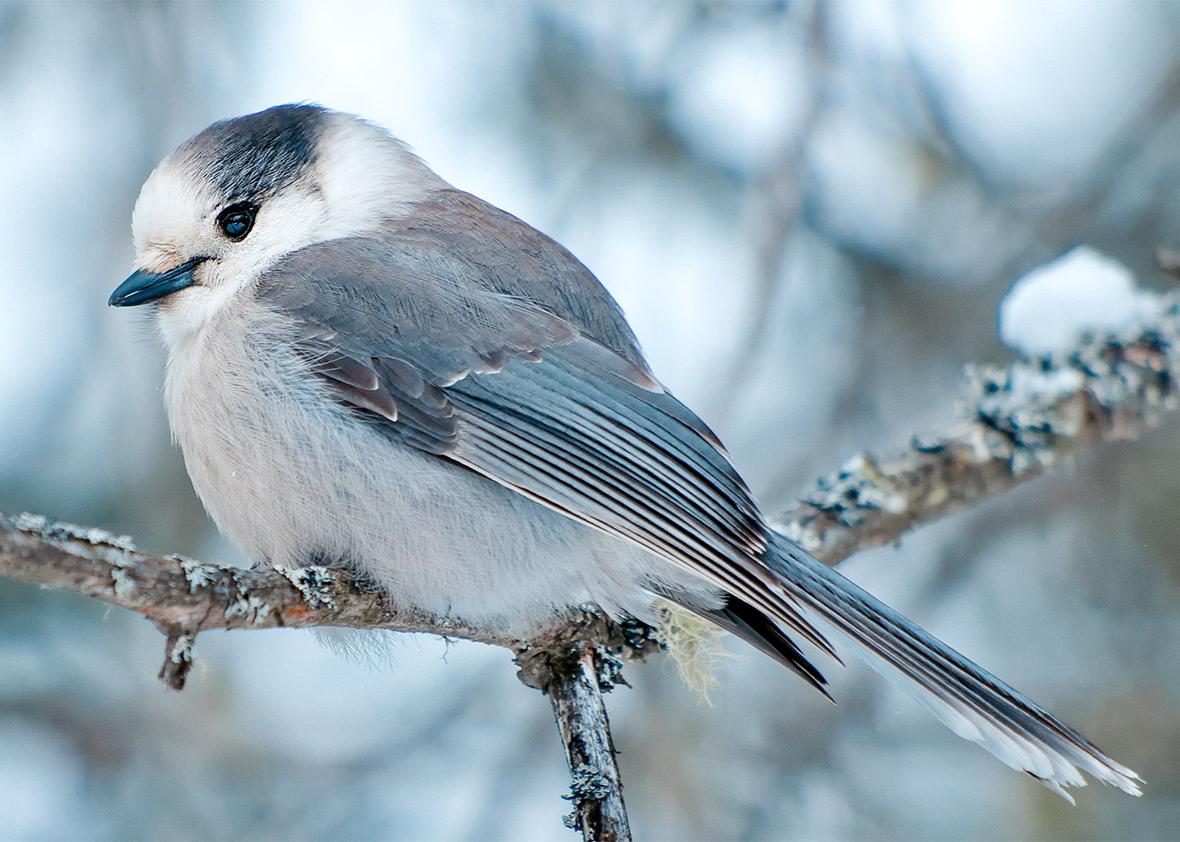During the past year, as America embarked on the treacherous task of selecting a new president, Canada selected, for the first time, a national bird. Its decision, which also came in November, was the result of a year-and-a-half of public voting hosted by Canadian Geographic magazine. It even included a debate— Canada’s leading ornithologists, conservationists, and even the poet laureate gathered to discuss the top five vote-getters before a winner was finally selected.
The final choice, as proposed by the magazine, was not the common loon, which already inhabits a spot on the country’s one-dollar coin. Nor was it something big and powerful, like a snowy owl or the gyrfalcon or some emblem of military might and chest-puffery. No, Canadian Geographic and the Royal Canadian Geographical Society rejected the popular vote and instead recommended the gray jay, a little-known but charming species that exhibits that rarest of national emotions, especially in this day and age: subtlety.
Gray jays were a bit of a surprise choice, and so the recommendation was met with some controversy. (Or, in a headline that few editors can resist: “ruffled some feathers.”) Some Canadians wanted something more familiar and were upset that the winner of the public vote, the common loon, didn’t get the ultimate nod. I am here to tell those people that they are wrong. The gray jay is an excellent bird and, as far as national birds go, a bold and innovative selection.
Around the globe, national birds can be split into three basic categories: the Endemics, the Esteemed, and the Eagles.
Endemic species are those that live in that country and nowhere else. These birds are, naturally, a point of national pride. Montserrat has the Montserrat oriole, Saint Helena the Saint Helena plover, the Philippines has the Philippine eagle. Pretty simple.
Esteemed birds are just ones that everybody likes. Lots of these are flashy and colorful, like Peru’s Andean cock-of-the-rock, Angola’s red-crested turaco, Nicaragua’s turquoise-browed motmot. Others are species that are otherwise associated with the country, like the little owl, an important symbol in Greek history, or the cute European robin, which won a recent public vote to become the U.K.’s national bird, though it isn’t official yet.
Finally, are the eagles. These are the macho birds, for those insecure nations who constantly feel the need to show you how tough they are. At least 15 countries have some species of eagle as their national bird, including the African fish eagle (Malawi, Namibia, South Sudan, Zambia, and Zimbabwe), golden eagle (Afghanistan, Mexico, and several other countries unofficially), and of course America’s bald eagle. A host of other noneagle raptors fit into this tough-guy category, including Hungary’s saker falcon, Iceland’s gyrfalcon, and North Korea’s northern goshawk.
Canada’s choice of the gray jay, however, breaks the mold. Though it is found in every Canadian province, it isn’t endemic to Canada, ranging into Alaska, northern New England, and down the Rocky Mountains as far as Arizona and New Mexico. It isn’t a particularly beloved national symbol (at least not yet). It’s not colorful, and it’s not big and tough.
But it’s got personality. Gray jays are members of the corvid family, which also includes crows and ravens, known as among the smartest of bird species. Their intelligence presents itself as inquisitiveness and boldness; they’re unafraid of humans and are so well-known for their willingness to pilfer food from people that in many places the species goes by the colloquial name of “camp robber.” They’re spirited, you could say.
They’re also dignified. While other countries tend toward gaudier specimens, the gray jay has a clean, gray-and-white plumage; a bespoke suit instead of a wild costume. They look good, but they don’t need you to notice them. They’re comfortable in their own feathers.
Canadian Geographic considered other factors to bolster the bird’s Canadianness. While many species only visit Canada during the summer breeding season, gray jays don’t migrate, choosing to stick it out through the country’s harsh winters. Plus, they’re important to Canada’s native peoples. The Cree name for the bird, Wisakedjak, has been Anglicized into another common colloquial name: the Whiskey-Jack.
As a birder, I am wholly impressed with Canadian Geographic’s selection. It’s a smart choice, occupying a thoughtful middle ground between populist banality like the common loon and the twee, ornithological elitism of, like, the Harris’ sparrow or something. Like Canada itself, the gray jay is a pleasant surprise, comforting for its lack of pushiness and dramatics, endearing for its wit and poise.
It’s not up to me, though, and it’s actually not up to Canadian Geographic, either. While the magazine ran the national contest and selected the winner, nothing is official until the issue is taken up by the people’s representatives in Parliament. And if Canada’s Parliament is anything like ours, a thoughtful choice like the gray jay could soon be out the window, in favor of some dodo. Typical.
